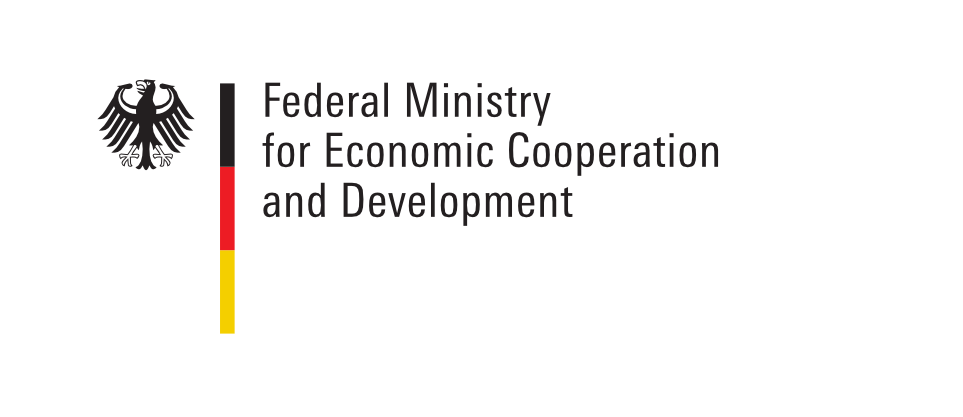- DE |
- EN
Turning polluted streams into green-blue corridors
For the Ukrainian city of Vinnytsia, the world looked very different when it was participating in the Connective Cities learning process on urban development adapted to climate change between 2019 and 2021. The war in Ukraine began in 2022 and has forced a fundamental shift in priorities for municipal administrations. However, the renaturation of small rivers, which Vinnytsia began as part of the learning process, remains an important project for the city as it forms a key element of its sustainable future.
Recognition of environmental, urban planning and social potential
The city, with its population of around 370,000, is located 260 kilometres to the south-west of Kyiv with 64 small rivers and streams flowing through it. Their potential has long been underestimated. The locals referred to them simply as “stinking streams”, they were frequently full of rubbish or routed underground and the water quality was dreadful. Today, the municipality understands the environmental, urban planning and social potential these watercourses and their banks provide – as blue-green corridors, local areas for recreation and for protecting and promoting biodiversity. “To begin with we really had no idea what renaturation of a water course involved. We thought removing all the rubbish from the streams would be enough,” recalls Yanna Chaikovska, director of the municipal Institute of Urban Development in Vinnytsia.
Learning from others – the fundamental idea behind Connective Cities
However, the Connective Cities dialogue event, which took place in Dortmund in September 2019, and the exchange with experts from the Emschergenossenschaft and Lippeverband the following year highlighted entirely new and far more extensive possibilities in terms of stream revitalisation. The experts from Germany explained to their colleagues in Vinnytsia how river revitalisation and the ecological redevelopment of small river areas are planned and implemented in Germany. And they knew what they were talking about. Extensive work has been undertaken as part of the post-industrial structural transformation of the Ruhr region to restore the Emscher and its tributaries. The region was previously an area of heavy industry.
In discussion with regional experts at two Connective Cities events on Climate resilience in South East Europe and in the Caucasus in 2020, decision-makers from Vinnytsia also firmed up their ideas on the approach they wanted to take to the renaturation of small rivers. They initially planned a pilot project to revitalize the Diohtianets, a small municipal river.
Positive response to expert findings from policy-makers
The Vinnytsia city council was very interested in the positive assessment from German experts of the potential provided by the municipal watercourses. This resulted in the council approving the “Water courses development concept – 2035” as a central basis for all further renaturation activities and as a key component in the strategy for turning Vinnytsia into a green city.
The importance of renaturation to the municipal of administration is reflected in the fact that, in 2021, they created a post for the project within the municipal Institute of Urban Development in Vinnytsia – the local municipal planning company responsible for strategic local governance projects and international cooperation.
Participation is the key to success
One key aspect in the renaturation of streams is that the population is involved. An information campaign in 2021 resulted in increased awareness of river courses among the people of Vinnytsia and meant they valued them more. During excursions and workshops they learned more about the river courses, looked into their history and, for example, researched the background to their names. The campaign was funded by the City Climate Finance Gap Fund of the Deutsche Gesellschaft für Internationale Zusammenarbeit (GIZ) and the European Investment Bank (EIB).
Concepts for implementation at a later point
In May 2024, Vinnytsia initiated a social environment concept for a section of the small Tyazhylivka River in order to develop a strategy for the restoration of biodiversity in the area. The project is supported by U_CAN Ukraine as part of Horizon Europe Research and Innovation Programme in support of the European Green Deal. It establishes key requirements for the renaturation of the city's other small rivers in the future. The conceptual approach currently makes sense as, since the outbreak of war, implementation of technical measures for the renaturation of river courses has not been possible.
Even today in Vinnytsia, modest progress can yet be seen in the renaturation of small rivers. The population has a different appreciation for them: they are being valued again. The large-scale technical renaturation measures on the Diohtianets and on other water courses are, however, still pending. But, once the city again has sufficient capacity for structural measures, the concepts are there, ready to go. The preliminary work has been done with the help of the Connective Cities learning process.
How Vinnytsia benefits from the exchange of expertise:
-
Broader perspectives on the environmental, social and urban planning potential provided by small municipal rivers
-
Support with project development from German water company experts
-
Newly acquired knowledge used to develop urban strategies
-
Finished concepts have been developed so they can be quickly implemented after the war
“Today, thanks to the Connective Cities learning process, politicians and administrators in Vinnytsia understand that small rivers which are environmentally intact and integrated within urban development have a key role to play in making Vinnytsia a greener city and a better place to live.”
Yanna Chaikovska, director of the municipal Institute of Urban Development in Vinnytsia













